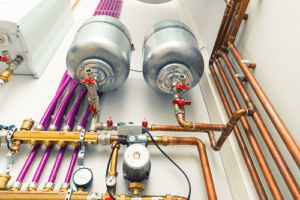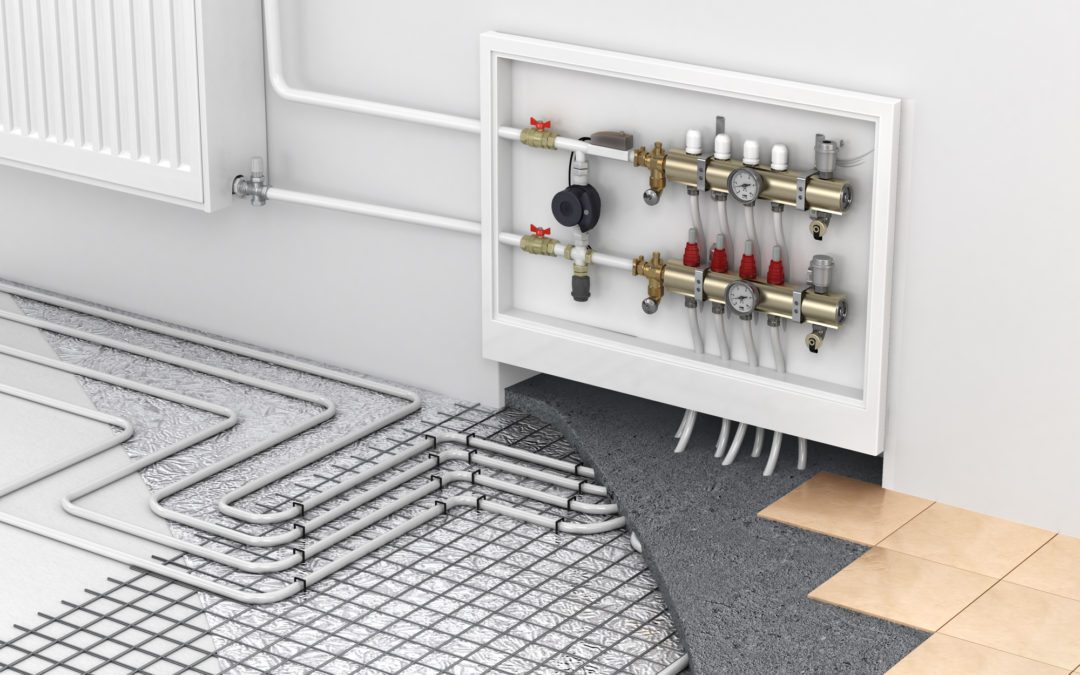Does your home use hydronic baseboard heating to heat individual rooms? If so, you may struggle with the common problem of air in your baseboard heating pipes.
While hydronic heating is typically a very efficient heating method—and one with considerable creature comforts—air in the pipes can be a big drawback. The air in the pipes doesn’t pose a significant risk, but it can cause the pipes to emit loud noises as hot water circulates through them to heat the house.
Eliminating that annoying noise is crucial to getting the full benefit and enjoyment out of a hydronic heating system. In this blog post, we will provide tips that homeowners can use to eliminate the heating pipe/air problem on a DIY basis. Understanding how to get air out of a boiler heating system will help you enjoy it much more.
How Baseboard Heating Works
Before moving on to a full step-by-step guide for removing air from your baseboard heating pipes, let’s talk a bit about why baseboard heating is a popular option among some homeowners.
While most people think of central heating in terms of furnaces, ductwork, and forced air, baseboard/hydronic heating technically is a type of central heating. Rather than using a furnace, a hydronic system relies on a boiler, which heats the water before distributing it throughout the house via the baseboard units. Each baseboard unit derives a little bit of heat from the hot water before sending it to the next unit. The units then heat the room through radiant heat.
There are a few obvious drawbacks to warming your home with baseboard heat. First, the baseboard units line the walls in most rooms, limiting options for furniture placement and can cause space issues. Second, with an older boiler or system design, the baseboard units that are further from the boiler are inherently going to receive less heat than the rooms closer to the boiler. This issue can make it challenging to achieve a consistent temperature throughout the home.
However, as mentioned before, there can also be benefits to boiler/baseboard systems. Many homeowners prefer radiant heat to forced air heat, finding it more pleasing and less drying. A person who wants radiant heating but can’t afford the high cost of radiant floor heating can save money and achieve a similar overall feel by opting for baseboard heat.
Furthermore, with a newer or high-end boiler, you can heat your home more efficiently with a baseboard system than you can with the average furnace/forced air setup.
The “Air in Your Baseboard Heating Pipes” Problem
Of course, you don’t need to settle for a loud heating system to get the benefits that baseboard heating offers. Being able to solve the “air in the heating pipes” problem, therefore, is a crucial maintenance step if you have a boiler system.
The good news is that removing excess air from your pipes and stopping the noise problem is relatively simple. Here is a step-by-step rundown of how to get air out of a boiler system.
How to Get Air Out of a Boiler System
Shut off the boiler:
You need to cut power to your boiler to drain the baseboard pipes. You can kill the power to the boiler by turning off the corresponding circuit breaker on your home’s service panel. Ideally, you will be carrying out this process in the spring, to avoid a situation where you are temporarily shutting off heat to the rest of your home.
Find the necessary valves:
A boiler system has multiple “zones” that direct where the hot water should be delivered around your house. Each zone has its own zone valve and shutoff valve. To start, close each shutoff valve.
Grab a garden hose:
You will be using a standard garden hose to drain water and air out of your boiler/baseboard system. There should be a drain spigot on the return lines for each of your boiler’s zones. You’ll need to attach the garden house to each spigot in turn, in the same way, you would attach it to a spigot on the exterior of your home. Direct the other end of your garden zone to a sink or drain, or the outside of your house—wherever draining water won’t cause damage.
Open the zone valve and turn on the corresponding zone spigot:
Typically, zone valves are set to “Auto.” To open the valve and get water flowing through it, set it to manual. Then, turn off the spigot for the corresponding zone (the one to which you’ve connected the garden hose). These actions will fill the boiler with water, push water through the zone and its connected baseboards, and then back to the return and out through the hose. You should run the water for several minutes, keeping an eye on the hose as you go. You will likely notice intermittent pauses in the flow of the water, where there are big air bubbles. You might also see smaller air bubbles in the stream of water. In any case, what you want to see is a steady stream of water with no obvious bubbles.
Repeat for other zones:
Once you’ve drained your first zone, turn off the spigot and return the zone valve to its manual setting. Unscrew the hose, taking care with the spigot end as it may be hot. Attach the hose to the spigot for the next zone and repeat step five until you’ve cycled through each zone.
Finally, the process by removing, draining, and storing the hose and opening the shutoff valves for each zone. Once these steps are complete, you can turn the power back on to your boiler.
This process, of removing air in heating pipes, is something worth knowing how to do if your house is heated by a boiler. Of course, an HVAC professional can help if you aren’t comfortable going the DIY route. In any case, if your baseboards are making a lot of noise, air is likely the culprit, and this process should solve the issue.


